We delve into the often-overlooked aspect of blue light emission from projectors and its potential effects on eye health.
As projectors become an integral part of our daily lives, whether in classrooms, offices, or entertainment spaces, it becomes crucial to understand the implications of prolonged exposure to blue light.
We will shed light on scientific insights, and will try to answer the main question ”do projectors emit blue light”, and examine the differences between direct and indirect blue light emitted from sources.
We will explore proactive measures that can be taken to reduce blue light exposure without compromising the visual quality of projector displays.
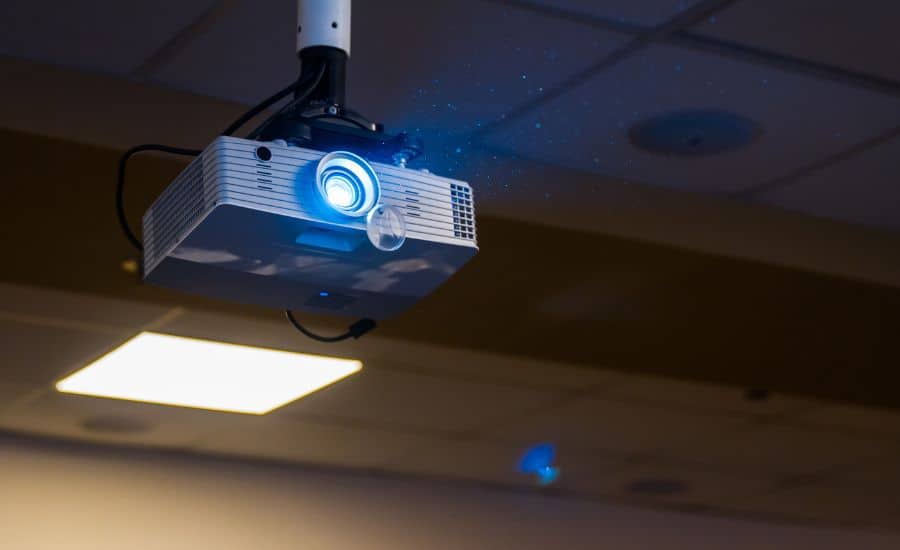
Understanding blue light emission from projectors
We will delve into the intricacies of projector blue light emissions and explore the differences between direct and indirect blue light sources.
How much blue light do projectors emit?
”Do projectors emit blue light?” and ”Whether this emission poses any risks to our eyes”. Two main questions arise about projectors these days.
To understand the extent of emits blue light from projectors, we must first comprehend the underlying technology.
Traditional projectors utilize high-intensity lamps to produce vibrant images on screens or surfaces. These lamps emit a considerable amount of blue light, which contributes to the overall brightness and clarity of the projections.
The prevalence of LED-based projectors has surged in recent years. LED (Light-Emitting Diode) projectors are renowned for their energy efficiency and longer lifespan compared to traditional blue light lamps.
However, they too emit a notable amount of blue light due to the nature of LED technology.
Studies suggest that prolonged exposure to excessive blue light, especially during nighttime viewing, may disrupt our sleep-wake cycle and contribute to digital eye strain.
The measurement unit for blue light intensity is referred to as “lux” or “lumens.“
The lux value determines the amount of light falling on a given surface, while lumens quantify the total brightness output of a direct blue light source.
When it comes to blue light glasses, their lux value can provide insight into the intensity of blue light projected onto the screen.
High-end projectors produce blue light to ensure clear and crisp images in well-lit visible light environments. On the other hand, home entertainment projectors might prioritize eye comfort by reducing blue light emissions.
Manufacturers are becoming increasingly aware of the potential risks associated with prolonged blue light exposure. As a result, many projectors now offer customizable color and brightness settings.
Consider adjusting the projector’s settings to reduce blue light emission, especially when watching movies or conducting presentations for an extended period.
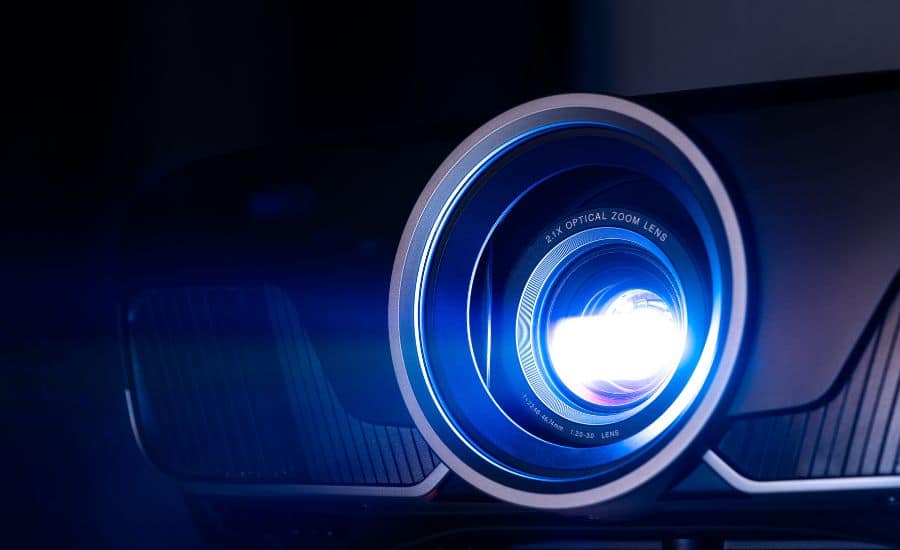
Light source: Direct vs. indirect
Two primary types of blue light sources are commonly used in projectors: direct and indirect.
Direct light source: Direct blue light source projectors employ a single high-intensity lamp to produce blue light for projection.
The lamp directly illuminates the imaging elements, such as liquid crystal panels or digital micro-mirrors, to form the images that are then projected onto the screen.
They are well-suited for large venues, auditoriums, and outdoor screenings where ambient blue light can interfere with image clarity in visible light.
Indirect light source: Indirect blue light source projectors, on the other hand, employ a different approach to produce the projected images.
Instead of directly illuminating the imaging elements, these projectors use a separate blue light source that illuminates an intermediate component called a “light engine”.
They are well-suited for home theaters, educational settings, and businesses that prioritize quieter operations and lower energy consumption by using blue light glasses.
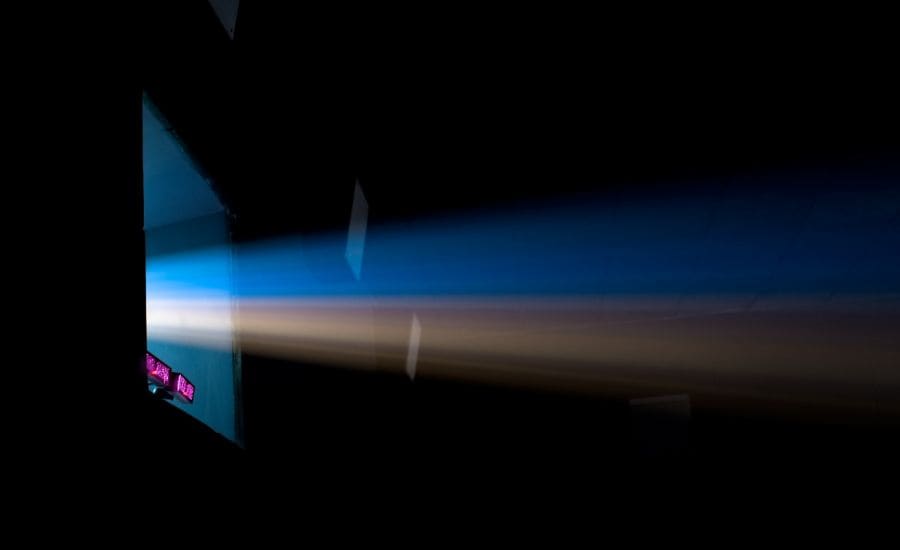
Minimizing and mitigating blue light exposure
We will explore effective strategies to protect your eyes and overall well-being while enjoying the benefits of modern projection technology.
What can we do to cut back on blue light exposure?
To protect our eyes from the potential effects of projectors with emit blue light.
- You can adjust brightness and color temperature.
- Use blue light-blocking glasses or screen protectors.
- Take regular breaks and follow the 20-20-20 rule.
- Create a dim environment and position the projector carefully.
- Encourage ambient lighting and choose eye-friendly settings.
- Limit overall screen time.
By incorporating these simple measures, we can enjoy the benefits of projectors while safeguarding our eye well-being.
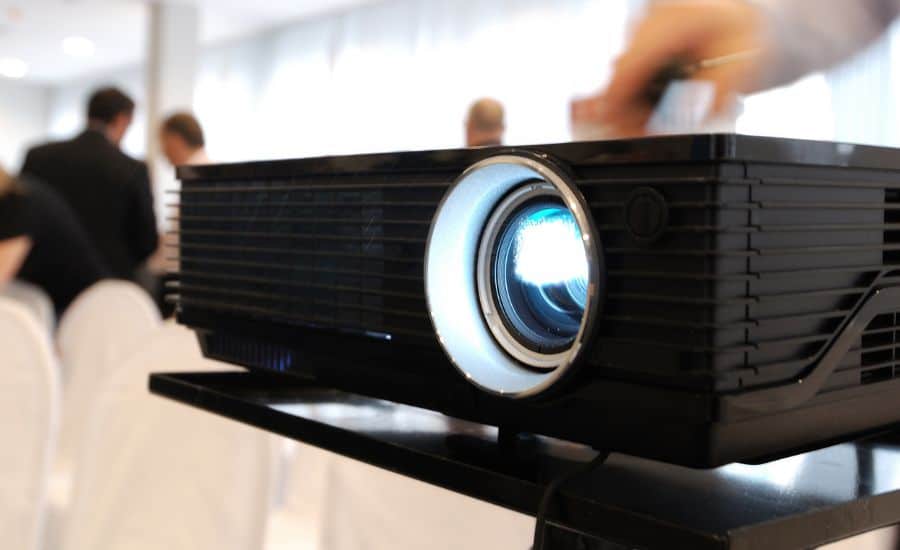
How can blue light damage your eyes?
Research suggests that prolonged exposure to blue light can lead to digital eye strain, characterized by symptoms like dryness, irritation, and blurry vision.
One of the primary concerns with blue light is its ability to penetrate deep into the eye, reaching the retina.
Prolonged exposure to blue light glasses has been associated with an increased risk of macular degeneration, a condition that damages the central part of the retina and affects sharp, central vision.
This is particularly worrisome as macular degeneration is one of the leading causes of vision loss among older adults.
Can laser projectors damage eyesight?
Laser projectors employ powerful lasers to create images projected onto screens or surfaces.
These lasers have intense blue light emitted, and prolonged exposure, so emitting blue light with high intensity can be potentially harmful to the eyes.
The risk lies in the fact that laser blue light bounces are focused, concentrated, and can cause damage to the retina, the light-sensitive tissue at the back of the eye responsible for visual perception.
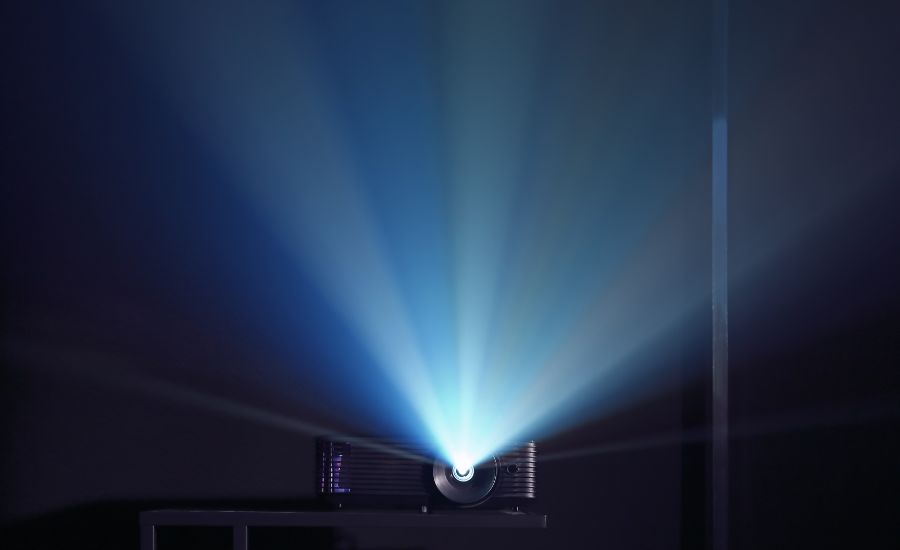
Safety precautions when looking at projectors emit blue light
Taking specific precautions can protect both your eyes and overall well-being.
Optimal viewing distance: Maintain a safe viewing distance from the projector screen.
Reduce ambient lighting: Dim the surrounding lights to enhance the projected image’s clarity.
Adjust brightness settings: Calibrate the projector’s brightness settings to a comfortable level, especially during extended viewing sessions.
Use eye-care modes: Many projectors come equipped with eye-care or blue light reduction modes.
Take regular breaks: Remember to take short breaks to give your eyes some rest or wear protective glasses.
Keep the lens clean: Dust and smudges on the projector lens can distort the image and reduce clarity.
Avoid direct eye contact: Never look directly into the projector’s blue light source, especially when it’s powered on.
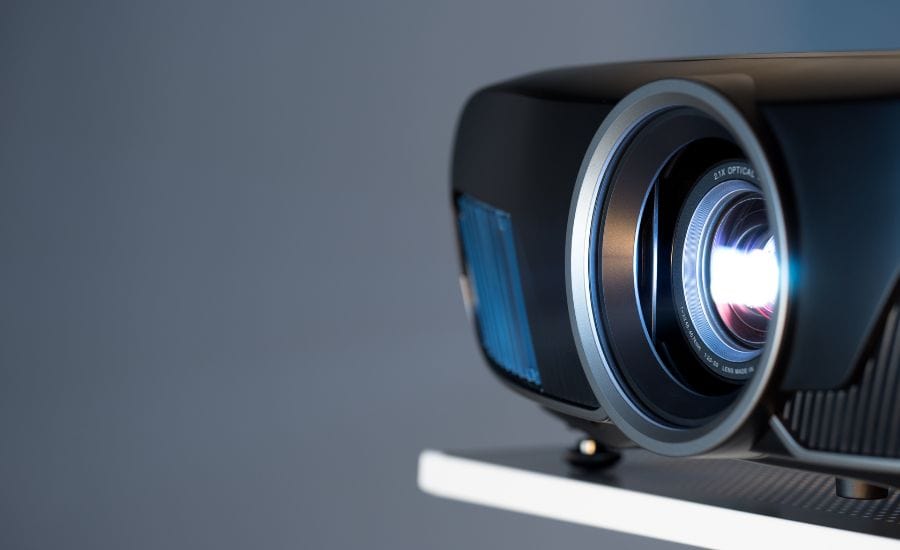
FAQ
Is projector better for eyes than TV?
The impact on the eye’s well-being depends on usage and precautions taken. Both projectors and TVs can be safe. Maintain a proper viewing distance, take breaks, and adjust brightness to reduce eye strain.
What are the side effects of projectors?
Common side effects may include eye strain, fatigue, and discomfort. To minimize these effects, maintain a safe viewing distance, take breaks, and adjust brightness settings appropriately.
Can projectors cause headaches?
Projectors can cause headaches due to factors like high brightness, excessive harmful blue light, screen glare, and improper viewing distance. Taking breaks, adjusting settings, and using eye-care features can help minimize the risk.
Do projectors emit UV light?
Projectors used in everyday settings do not emit UV light. They utilize visible blue light sources for projection. UV emission is not a concern for standard consumer-grade projectors. Follow manufacturer guidelines for safe usage.
Conclusion
As we’ve explored the different types of projectors and projector screens and their varying effects on eye health, it becomes clear that understanding and managing blue light exposure is of paramount importance.
By being aware that the TV blue light produced emitted light from the source, implementing practical measures to reduce blue light falls, and adhering to safety precautions when using projectors, we can safeguard our vision and enjoy the benefits of this technology without compromising our eye health.
Let’s continue to strike a balance between innovation and well-being as we embrace the ever-evolving world of projectors.
